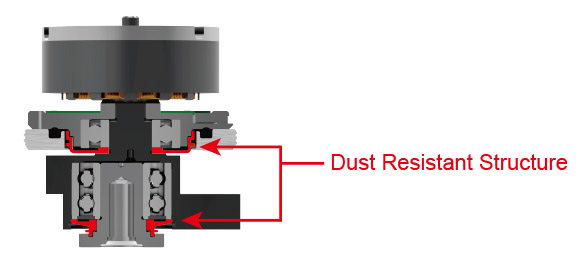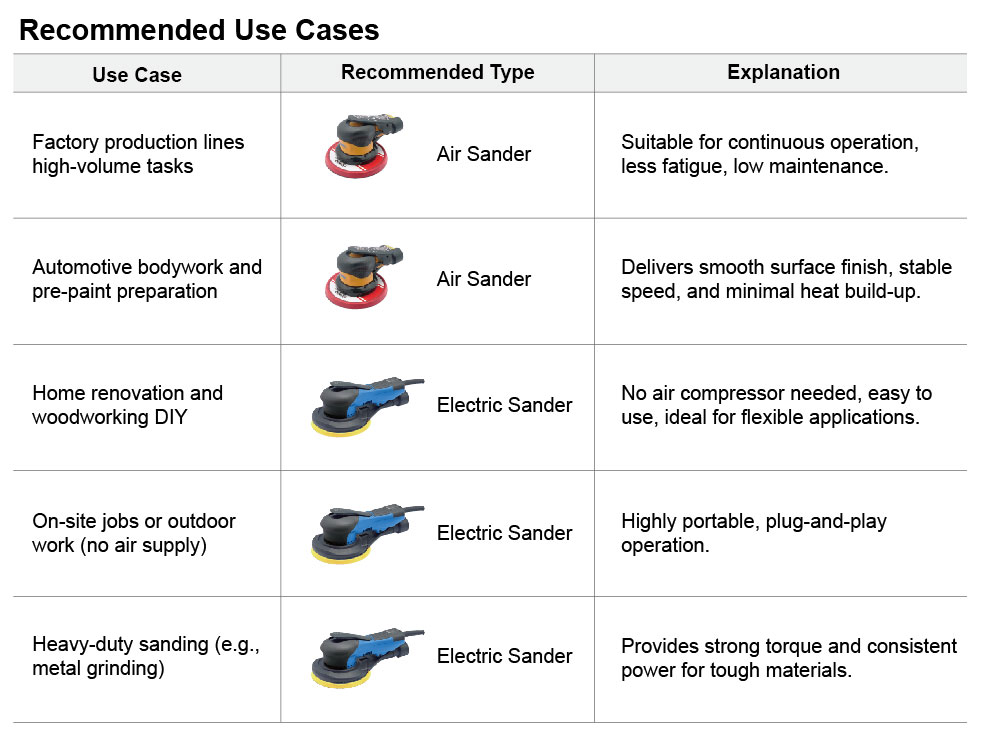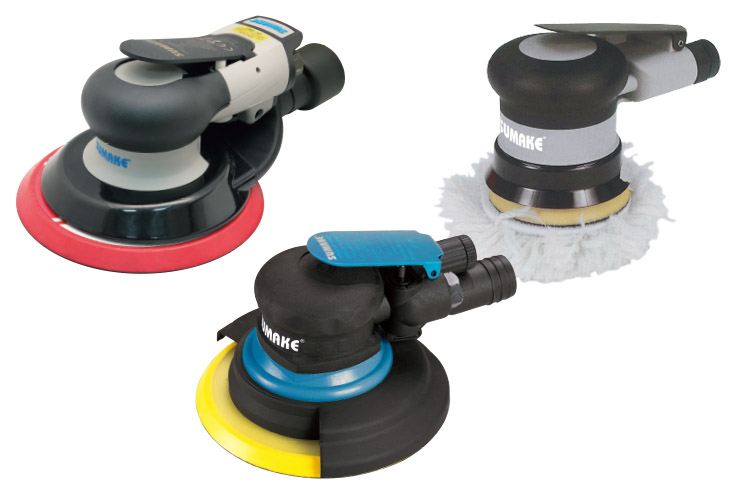Deep Comparison: Air Sanders vs. Electric Sanders

In industrial and woodworking applications, sanders are essential tools for surface finishing and polishing. Based on their power source, sanders are mainly divided into two categories: air sanders and electric sanders. The following is a comparison of the two in terms of power source, performance, durability, cost, and usage environment.
Part 1.Comparison Between Air Sanders and Electric Sanders
1.Performance & Torque
✅Air sanders: Generally offer higher RPMs, are lighter, and dissipate heat better—ideal for extended use.
✅Electric sanders:Usually have stronger torque and better stability under heavy load, though they are heavier.
2.Durability & Maintenance
✅Air sanders:have a simple structure, are more durable, and are cost-effective to maintain, but require clean, dry air supply.
✅Electric sanders:have more complex internals and motors that wear out over time, with a higher risk of overheating.

▲Since the motor generates a significant amount of heat, thermal management is crucial.
3.Power Source
✅Air sanders operate using compressed air and require an air compressor.
✅Electric sanders are powered by electricity and can be used simply by plugging them in.
▲An air sander requires an air compressor to operate.
4.Usage Environment
✅Air sanders are commonly used in factories and automotive shops where high-volume continuous operation is needed.
✅Electric sanders are ideal for home use, on-site work, and portable applications.
5.Cost
✅Air sanders require an initial investment in an air compressor; while the tool itself is inexpensive, the system cost is higher.
✅Electric sanders have no need for extra equipment and are convenient, though the tool price is generally higher.
6.Conclusion
If you are looking for a high-efficiency, lightweight tool for long-duration tasks and already have an air system, an air sander is ideal. On the other hand, if you valueease of use and versatility across different locations, an electric sander is more practical.
Part 2. Detailed Pros and Cons Comparison of Air Sanders vs. Electric Sanders
1.Air Sander
▲A variety of air sanders meets different demands.
-Pros
✅Lightweight Body: No internal motor makes the tool lighter and more ergonomic for extended use.
✅Smooth Operation with Low Vibration: Ideal for fine finishing and smooth polishing with minimal hand fatigue.
✅Less Heat Build-up: Since it runs on compressed air, it doesn't overheat easily, even with continuous use.
✅Easy Maintenance:Simple mechanical structure makes it easy and inexpensive to maintain.
✅Long Lifespan:No fragile electronic parts, highly durable.
-Cons
❌Requires External Equipment: Needs a compressor and air supply system.
❌High Noise Level: Compressor and tool operation can be noisy.
❌Limited Portability: Not suitable for field work.
2.Electric Sander

-Pros
✅Plug-and-Play Convenience: Ready to use with just a power source; very convenient for all types of users.
✅High Mobility: Easy to carry and use in different locations.
✅Consistent Power: Maintains stable performance under heavy loads.
-Cons
❌Heavier Weight: Built-in motor adds weight.
❌Heat Buildup: Can overheat with continuous use, requiring breaks and reducing productivity.
❌Higher Risk of Motor Failure: Motors can fail or burn out, especially in dusty environments, requiring more care.

▲The SUMAKE EMSC-B50 is equipped with a motor designed to resist dust.

✅Learn more about our sanders:


